
- Home
- Photography Tours
- Diary / Blog
- Galleries
- Foreign Trips
- Tasmania 2016
- NE Queensland 2016
- Western Alps 2016
- NE Spain 2016
- Australia's Wet Tropics 2015
- Australia's Top End 2015
- SW Australia 2015
- Switzerland 2015
- Andalucia 2015
- Belize 2015
- Australia 2014
- Switzerland 2014
- Belize 2014
- Bahama Islands 2014
- Switzerland 2013
- Ecuador 2012-2013
- Florida 2011-2012
- Vancouver Island 2011
- Australia 2010
- Peru 2008
- Bulgaria 2007
- Lesvos 2006
- California 2006
- New Zealand 2005
- Extremadura 2005
- Goa, India 2004
- The Gambia 2003
- About
September 2017
Attenborough Nature Reserve, Nottinghamshire

Common Kingfisher (Alcedo atthis)
Kingfishers are fairly common residents at Attenborough and they seem to me to have had a good year as I've been seeing them much more frequently than I used to, almost every day in fact. A normal sighting is just a flash of blue as they dart away upriver or along the banks of the ponds. Getting a good, clear view one perching as cooperatively as the male above is a rare occurrence.
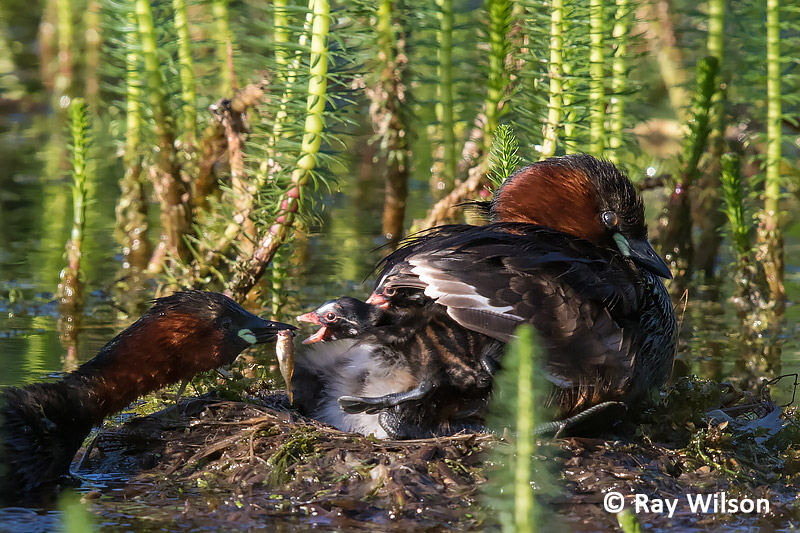
Little Grebe (Tachybaptus ruficollis)
The Little Grebes hatched right on cue, with the last one breaking out of its egg on the 12th - a very late date to be starting a family. Just in time as it turned out, as four days later a storm passed through, destroying the nest. Luckily Little Grebe chicks leave the nest only a couple of days after hatching and were due to leave anyway. They all survived the storm and were seen several times over the following weeks.
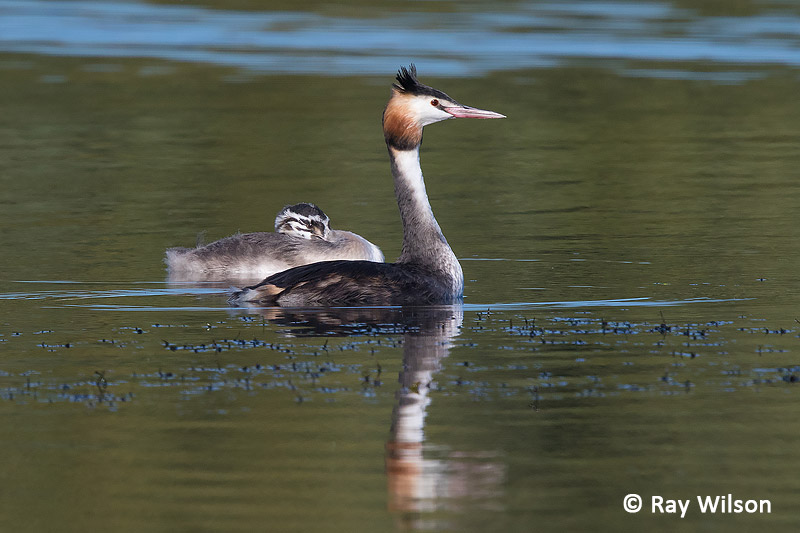
seven week old chick with its dad - Great Crested Grebe (Podiceps cristatus)
The sole surviving Great Crested Grebe chick from the nest with 9 eggs was growing fast and seven weeks after hatching was almost the same size as its father.
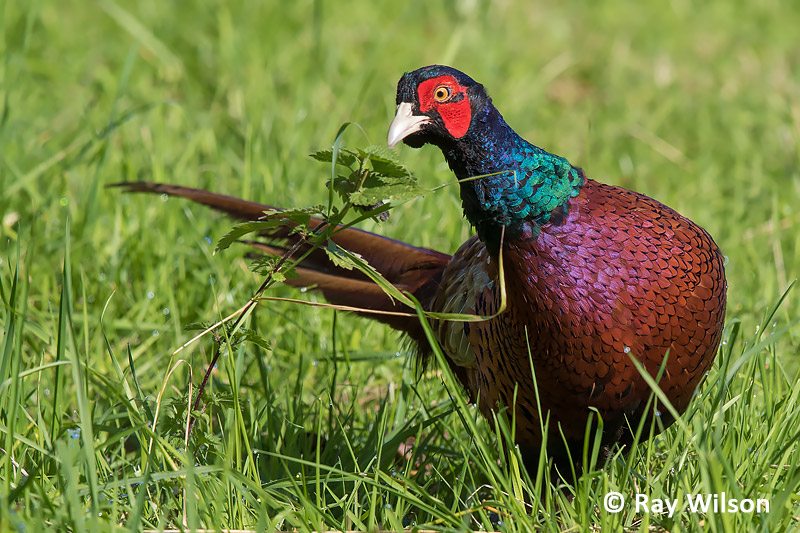
male Ring-necked Pheasant (Phasianus colchianus)
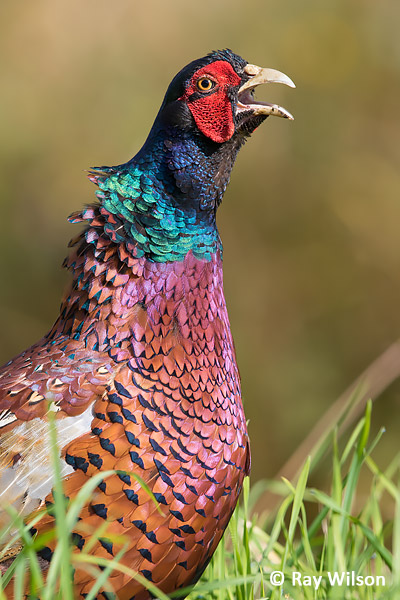 |
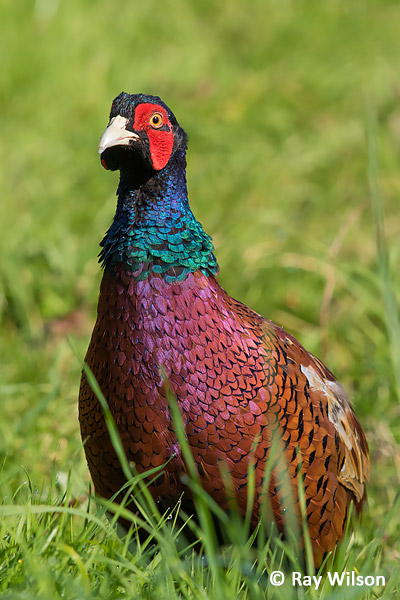 |
male Ring-necked Pheasant (Phasianus colchianus)
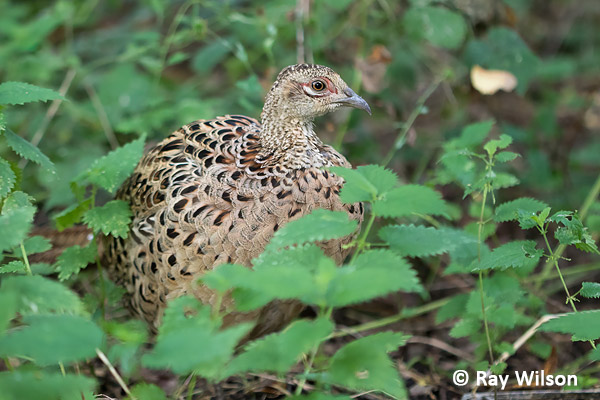
female Ring-necked Pheasant (Phasianus colchianus)
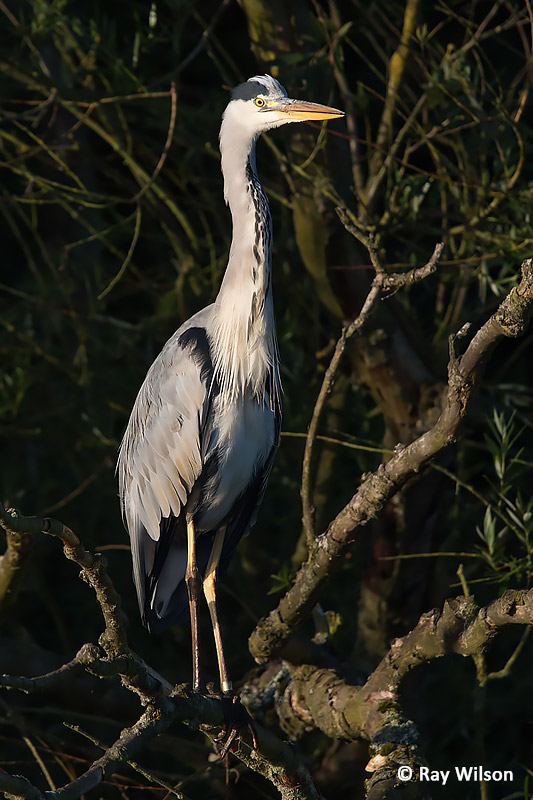 |
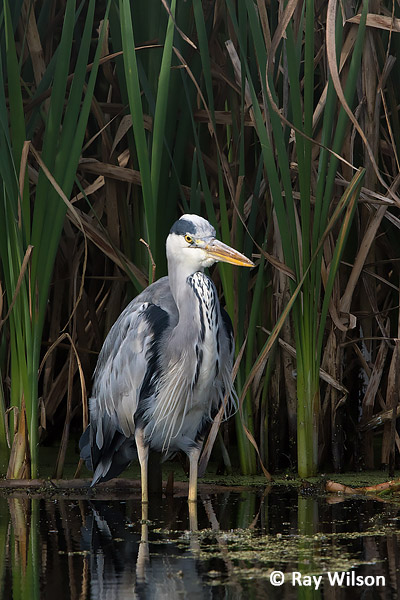 |
Grey Heron (Ardea cinerea)
The Common Hop has a strangely-structured flower and like many other members of the Cannabis family it has been widely used and cultivated for use as a herbal medicine since at least the 8th Century. Most people, however, will probably know it best for its use in the production of beer, where it is used as a stabilising agent as well as for its bitter flavour.
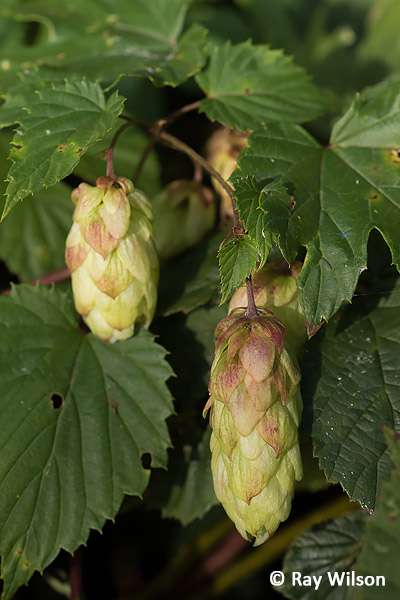
Common Hop (Humulus lupulus) |
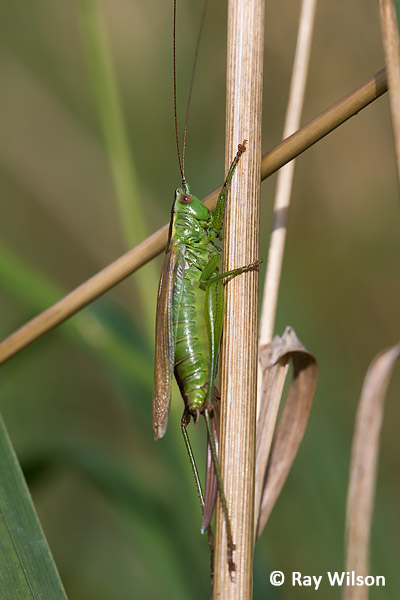
female Long-winged Conehead (Conocephalus discolor) |
Long-winged Coneheads are recent colonisers of Nottinghamshire with the first of this formerly Red Data list species only being recorded in 2007. Ten years later they can be found abundantly along the banks of the River Trent at Attenborough and are most easily detected by the use of a bat detector as their high-pitched songs are beyond the hearing of most people.
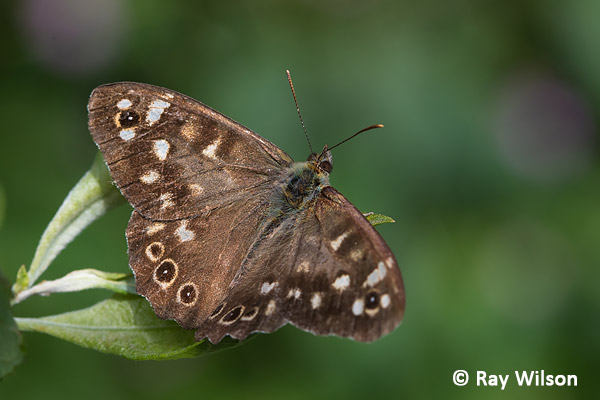
Speckled Wood (Pararge aegeria)
There is not a huge diversity of butterflies on the wing in September and the only species present are a few of the late summer species coming to the end of their life, such as Speckled Wood, or butterflies that have newly emerged and overwinter as adults, such as the Red Admiral. The best places to look for butterflies at this time of year are places where Ivy grows abundantly, especially if it is in a sheltered, sunny spot.
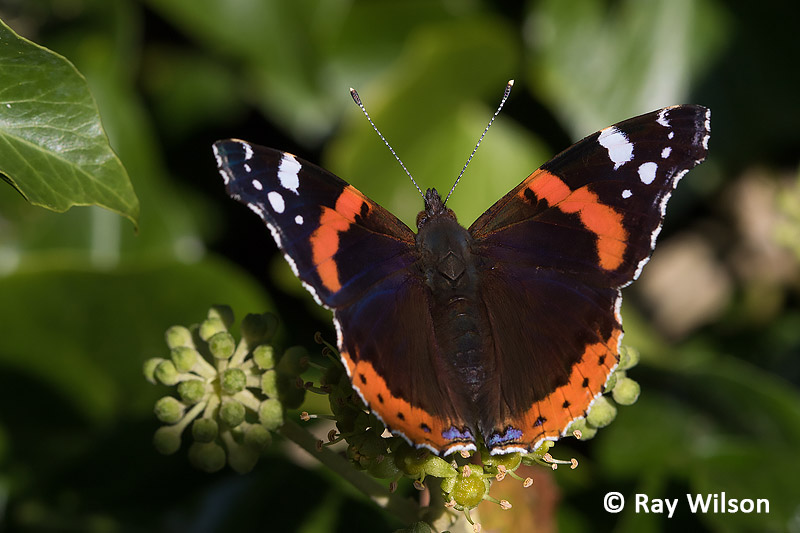
Red Admiral (Vanessa atalanta)
Ivy flowers don't just attract butterflies, and they are an important food source for many other insects at this time of year when very few other plants are in flower. One particularly impressive hoverfly I found one afternoon was the hornet-mimic Volucella zonaria. This is one of Britain's largest hoverflies and, after only becoming established in the UK in the 1940s, it has expanded its range steadily northwards other the last few decades. Nottinghamshire is at the northern edge of its current distribution and here it is mostly restricted to suburban areas.
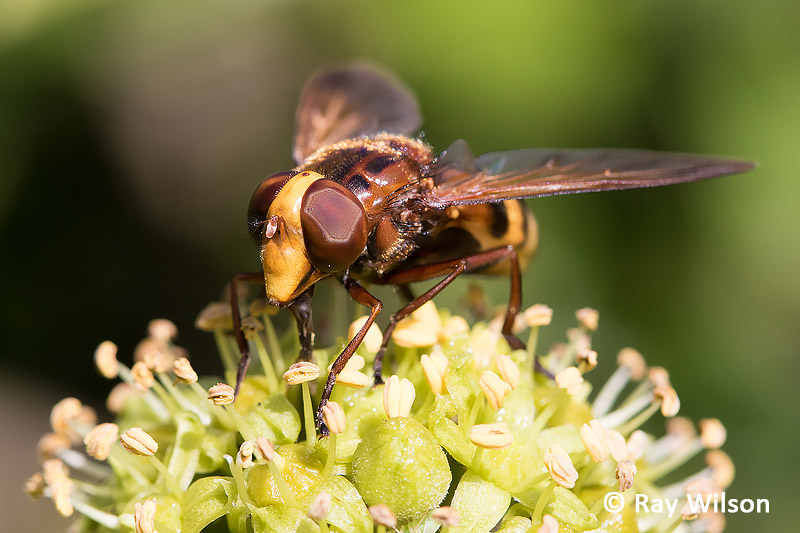
Volucella zonaria - a hornet-mimic hoverfly
Ray Wilson owns the copyright of all images on this site.
They may not be used or copied in any form without prior written permission.
raywilsonphotography@googlemail.com